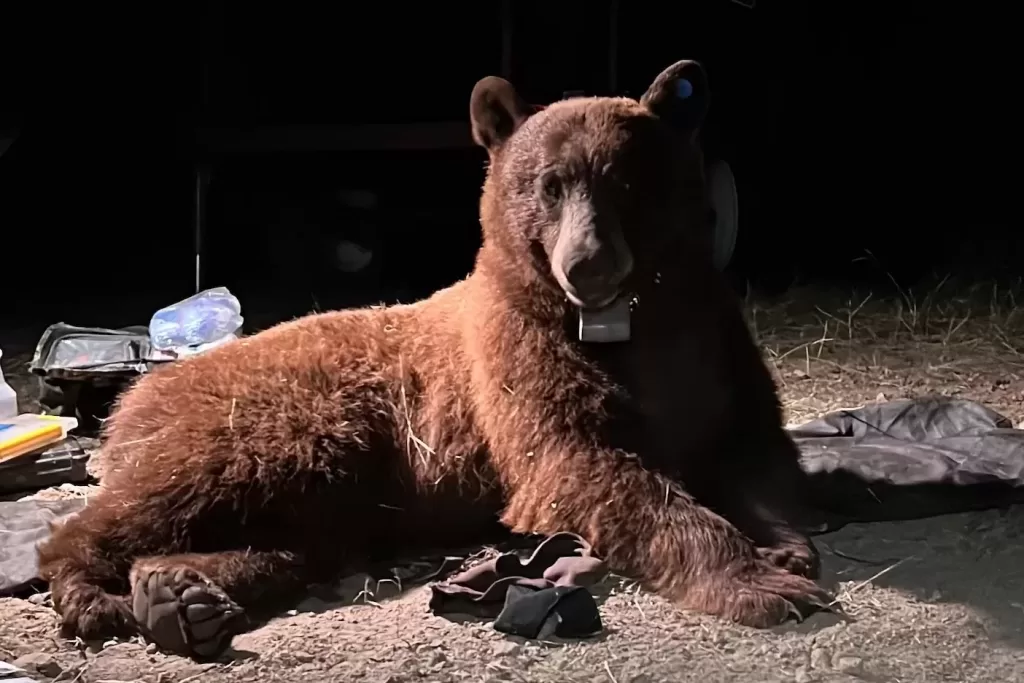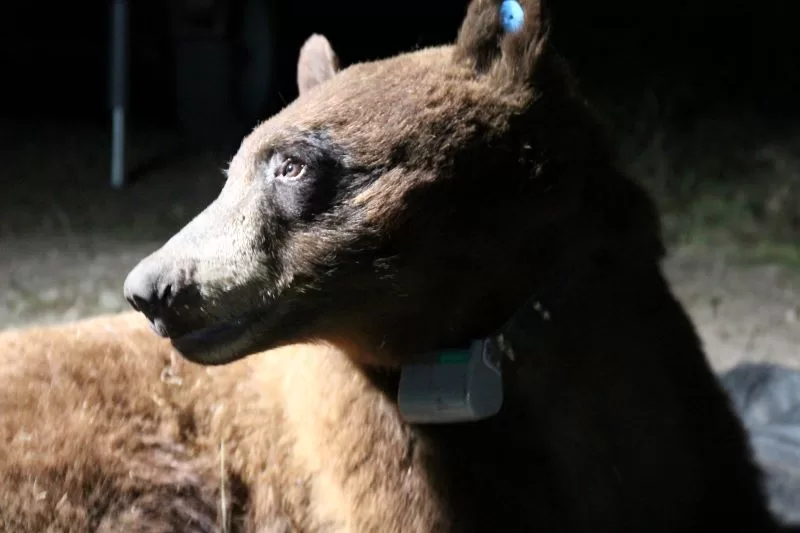
BB-12, a black bear that National Park Service (NPS) scientists had been tracking for the last three months, was struck and killed by a vehicle on the 101 Freeway at the top of the Conejo Grade between Newbury Park and Camarillo.
A motorist on the freeway called the California Highway Patrol (CHP), reporting the accident on July 20. At around 10:30 p.m., an NPS biologist driving by noticed the bear on the median and stopped to assist. With the help of a CHP officer, he picked up the carcass and transported it to the NPS freezer facility.
The male bear, estimated to be about 3-4 years old, had a GPS radio collar that biologists had used to track his movements. “When any of our radio-collared animals get killed on the road, it’s sad but not that surprising after 20 years of studying these animals in the region.” said Jeff Sikich, the lead field biologist for the mountain lion study at Santa Monica Mountains National Recreation Area (SMMINRA). “Roadkill is the number one source of mortality for our mountain lions, so there’s no reason to believe it would be much different for other large carnivores.” Sikich said BB-12 moved a lot in the short time they followed him and crossed major roads successfully five times. This unfortunate fatal accident occurred on the sixth time.
The 210 lb. bear was initially captured April 23 in a natural area of the western Santa Monica Mountains, south of the 101 Freeway. Biologists believe he had lived in the Santa Monica Mountains for two years, based on remote camera photos, but he likely originated from the Santa Susana Mountains north of Highway 118, meaning that he would have crossed major highways before being tracked.
He made at least a couple of visits to beaches in Malibu. A few weeks after he was collared, he successfully crossed the 101 Freeway. Highway 23, and the 118 Freeway and returned to the Santa Susana Mountains.
On July 17, between 10 p.m. and midnight of July 18, BB-12 crossed the 118 Freeway heading south toward the Santa Monica Mountains. Officials captured video surveillance of the bear in Moorpark.
Two days later, in broad daylight between 10 a.m. and 2 p.m., he crossed busy Highway 23 north of the Tierra Rejada exit. His last location was on July 20 at midnight in the Wildwood neighborhood of Thousand Oaks.
Biologists are grateful to BB-12 for the valuable insight he provided during the short time he was being studied.





